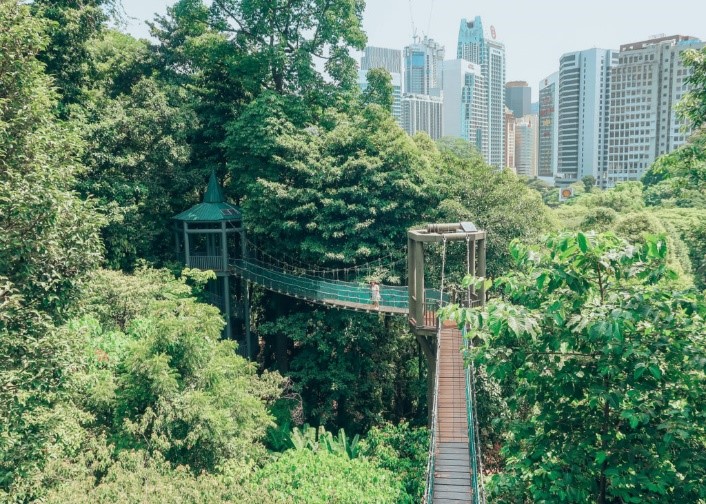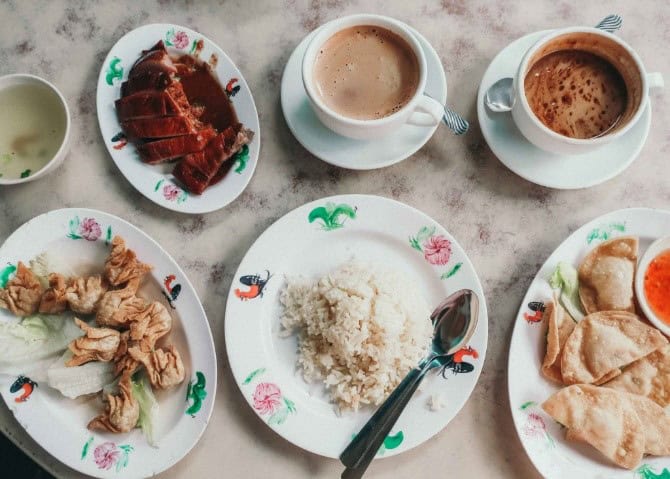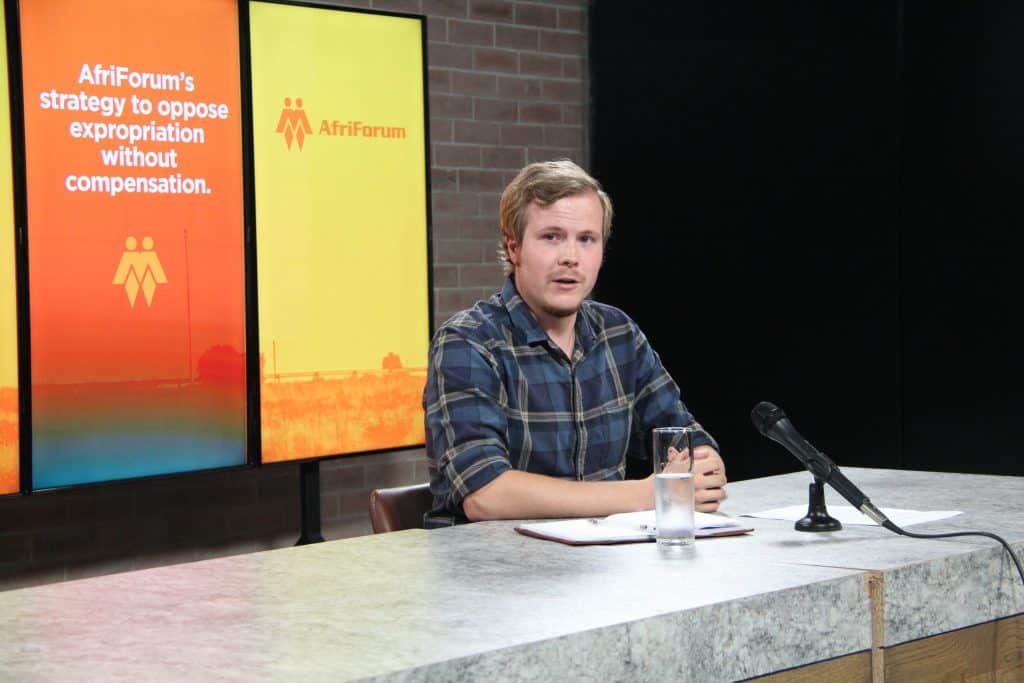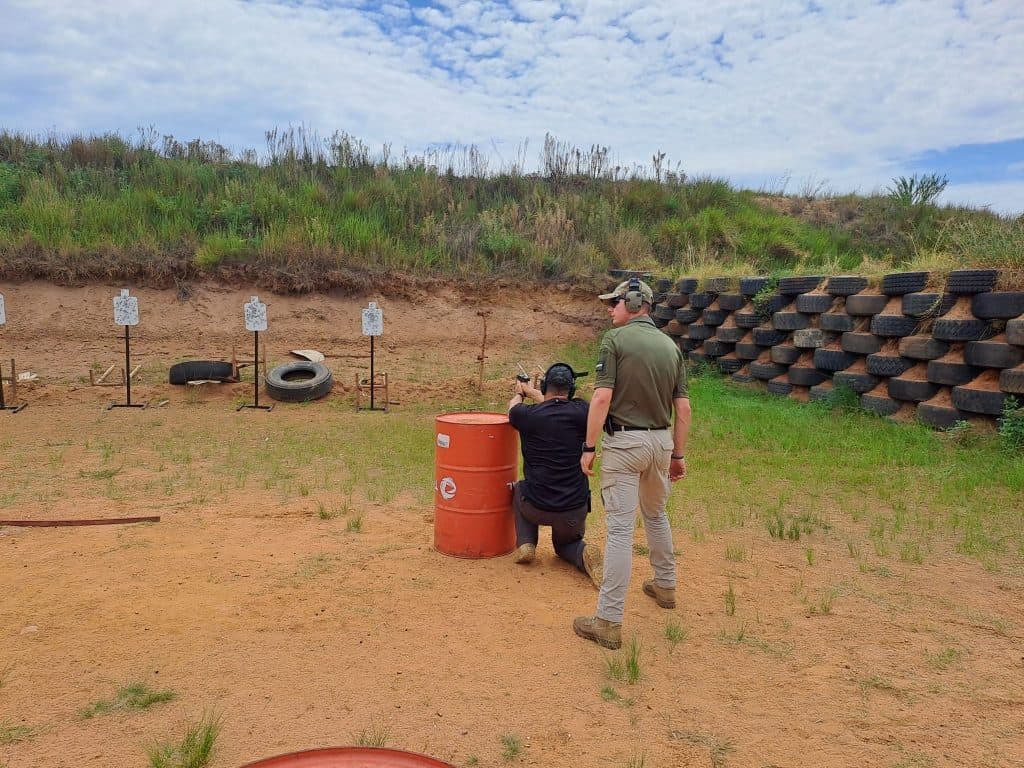Kuala Lumpur: Street food in Jalan Alor and a fishy foot spa at the Central Market
Eat street food in Jalan Alor, Kuala Lumpur
With the largest number of street food restaurants and stands in Kuala Lumpur, Jalan Alor is a tourist attraction in itself. A trip to Kuala Lumpur is not complete without tasting a few local delicacies from this extensive food market.
Most restaurants are closed during the day. Restoran Dragon View is, however, an exception and a favourite among locals. Open 24/7, Dragon View offers over 100 dishes, which makes it really hard to choose! They offer anything from beef, pork and lamb dishes to chicken and duck, all served with delicious rice, noodles, soup or porridge. You name it, they cook it. Do sit down for some Marmite ribs, fried duck with white rice, deep-fried wontons and deep-fried dumplings at one of Restoran Dragon View’s little red round tables. They also serve delicious tea, known as teh tarik. For the adventurous, Dragon View offers a wide variety of frog dishes, including fried frog with spring onion, dry chilly deep-fried frog with slices of ginger, steamed frog with minced ginger, clay pot drunken frog and frog porridge.
Jalan Alor is packed with fresh fruit stands. You can buy the most delicious locally grown, indigenous fruit like mangosteen, cempedak, pomelo, rambutan, duku-langsat and snake fruit. For next to nothing, you can also buy fruit more recognisable to Western taste buds, such as mango, lychee, watermelon, papaya, jackfruit, starfruit, guava and honey apple. The best-known fruit on this street – and in the country, for that matter – is durian. In some Asian countries, durians are known as the “king of fruits”. Durians are giant fruit (they typically weigh between 1 kg and 3 kg) and have edible, pale yellow flesh. Contrary to popular belief, the durian is not the national fruit of Malaysia; officially the rambutan is. But the fruit that gets everyone from locals to tourists excited definitely is the durian. The question whether the durian is garbage or a delicacy is a hot topic of debate in Malaysia. While the fruit’s distinctive smell is pleasantly sweet to some, to others it absolutely disgusting and they compare it to vomit or raw sewage. Whether you find it sweet or sickening, remember the durian’s odour lingers for several days. Therefore, many hotels and all public transport banned the fruit. When you try it, make sure you wear a glove or you’ll have to live with vomit-smelling fingers for days.
It is hard to choose from the thousands of Malay, Chinese, Indian and Thai dishes at the hundreds of stalls and restaurants with tables and chairs spilling onto the street. So, make sure you go hungry, and not just once. The market is a great place to find cheap, delicious eats and it is a perfect place for a jet lag-educed midnight snack, as Jalan Alor is really at its best and busiest between 00:00 and 03:00. Try the following from the stalls:
- Curry puffs, which is basically a spoon of strong vegetable curry and half a hardboiled egg wrapped in dough
- Chinese sesame balls with peanut paste
- Different kinds of dim sum
- Ice creams and fresh fruit juices, but ask for no ice
- Chicken satay
- Steamboat prawns, squid and local fresh vegetables
For a real treat, go watch the BBQ masters at Dina’s Recipe as they prepare and cook a lamb on a rotisserie over a massive open fire right in the middle of the street. When you are ready to order – and trust me, you will want to – you simply tell the two chefs in charge how much you want and then pay by weight. The roast lamb comes in a cardboard box with a wooden stick and is by far one of the most delicious dishes in Kuala Lumpur.
Walk through the sky at KL Forest Eco Park
It is hard to believe that a piece of virgin rainforest still exists among the towering skyscrapers, busy roads and hundreds of shopping malls in the very centre of Kuala Lumpur. The rainforest, one of Malaysia’s oldest forest reserves, is part of the KL Forest Eco Park. The park was previously known as the Bukit Nanas Forest Reserve and was founded back in 1906.
The KL Forest Eco Park covers only 9,3 hectares of rainforest. It offers short, relatively easy walking trails amongst giant trees, some several hundreds of years old, while being serenaded by buzzing cicadas. Be sure to also keep your eyes open for fantastic birds, the resident troop of monkeys and other small mammals that have made this green city escape home.
If you love nature and long for a bit of adventure, the Canopy Walk is one of the best things in Kuala Lumpur. Stroll along 200 m of hanging walkways and platforms more than 20 m above the rainforest floor.
The KL Forest Eco Park is open every day from 07:00 to 18:00. The entrance fee of about R150 per person will give you access to the hanging walkways and the rest of the park. Be sure to wear comfortable walking shoes, light clothing and more than enough insect repellent as the mosquitoes are highly active and thirsty in this little rainforest.
Have a fishy foot spa at the Central Market
With all the walking you will be doing in Kuala Lumpur, your feet are bound to start feeling a bit sore and tired. Luckily, there is a tank full of very hungry fish in the famous Central Market ready to give you a fishy foot treatment that you will never forget!
The Central Market started as a traditional wet market in the 1880s, selling fresh meat, fish, fruits, vegetables and spices to the exploding city population. Between 1889 and 1933 the building underwent serious renovations and extensions. In 1937 the wet market was relocated, after which the current Art Deco style building was completed. Further decorated in 1985 with colourful tiles, decorative ceilings and various colours of paint, the Central Market is an important landmark for Malaysian culture and heritage and should definitely be visited.
The market consists of stalls representing the traditional wet market. It offers a unique shopping experience as a lot of culture is involved even though it is focused on retail. There are more than 300 shops featuring local handmade crafts, souvenirs, collectables, antiques and textiles. They are grouped into zones representing the three main cultural groups in Kuala Lumpur. In Lorong Melayu you will find traditional Malayan shops, in Lorong Cina you will find the Chinese shops and in Lorong India, of course, the Indian shops. The three zones give visitors insight into the cultural variety in Malaysia. On the second floor at the Lorong Kelapa food court, you will find some of the city’s finest snacks and noodles. In the Annexe you can stroll through fantastic art galleries, including the Illusion 3D Art Museum, Art House Gallery, and the Central Market Art Lane.
Once you have done all your shopping, admired some fine art, and had a few snacks, head to Lot NS13 where you will find the Cute Fish Spa. You can choose from two artificial ponds, one with big fish and one with smaller fish. Sit down, lower your feet into the water and relax while the fish eat the dead skin off your feet. Fish foot spas have been a part of the Asian wellbeing culture for a long time and have in recent years become more popular in Europe and America. The fish, sometimes referred to as “Doctor Fish”, micro-massage your feet as they nibble on dead skin cells, leaving your feet silky smooth. The treatment will cost you R20 for 10 minutes. Be prepared to giggle, squirm, jolt and change your mind about the whole thing for the first three or four minutes, as it is a very strange sensation and not something you experience every day. But hang in there; once you are settled in, it is very enjoyable and the results are fantastic.
You may relax if you have some doubts regarding the safety of fishy foot spas; the United Kingdom’s National Health Service (NHS) considers the risk of infections, catching blood-borne viruses such as HIV and hepatitis, and the risk of transmitting conditions such as athlete’s foot, as “very low”. However, you should steer clear of any fish foot spa if you have waxed or shaved your legs in the previous 24 hours; you may have tiny cuts that could increase the risk of infection. Also pass the fish foot spa if you have any open cuts, wounds, abrasions or broken skin on your feet or lower legs, or if you have a blood-borne virus such as hepatitis B, hepatitis C or HIV. For more information, please visit the NHS website.
For more information, including the market’s exact location and opening times, visit the Central Market website.




























